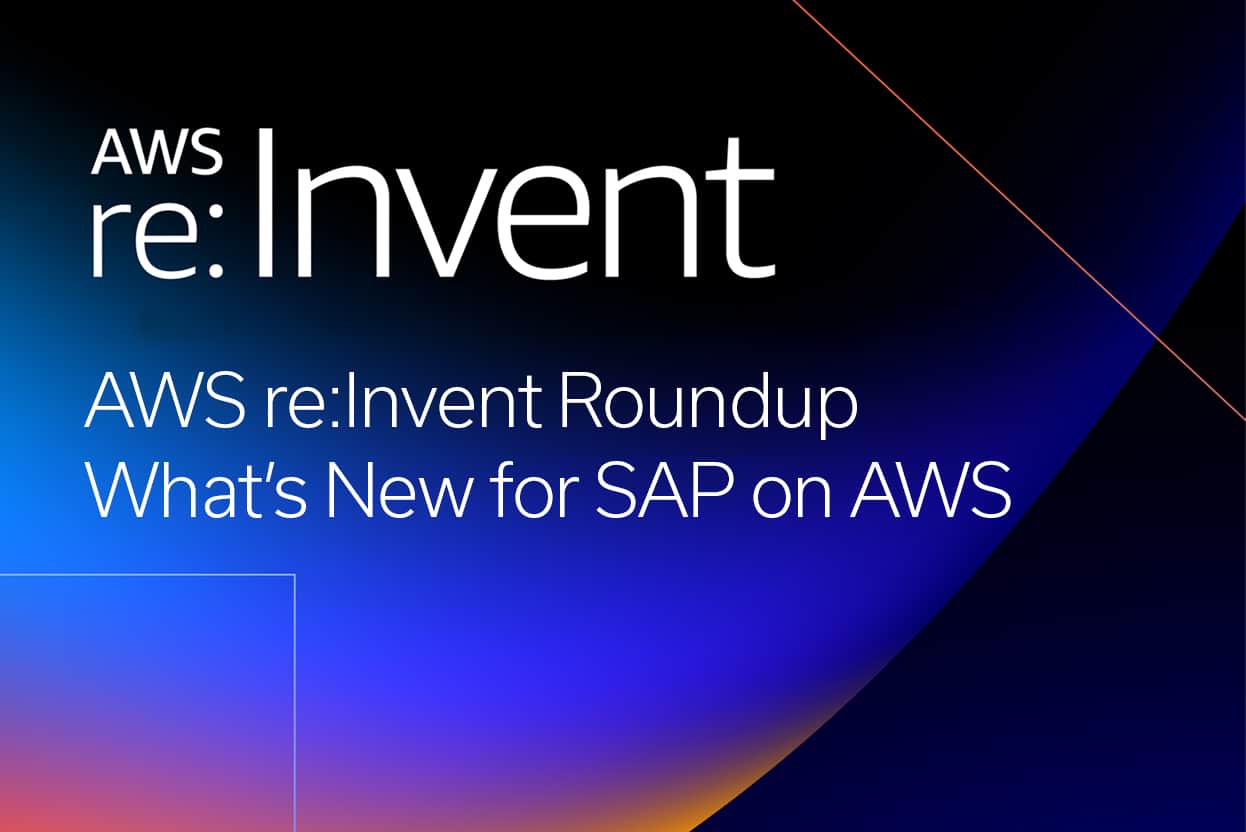The anticipation of AWS re:Invent could not have been higher, and those who attended in person or virtually were inundated with another deluge of updates at the event last week. Looking through our SAP-tinted lenses at Lemongrass, here’s a quick summary of some of the more interesting updates:
Compute:
-
- As is now tradition, re:Invent saw some newly SAP-certified EC2 families for SAP Applications:
- The long-awaited EC2 X2i systems is replacing the now rather aged X1’s. They come in 2 flavors, the *idn and *iedn being on 3.4ghz chipsets (*iedn are able to address more memory) and the *iezn running on 4.5Ghz cores which pump up the saps<>core ratio (although max out at 12x). No pricing just yet but we reckon the *ien and *iedn being the best bang for buck, especially as these new machines don’t have the additional cost of NVMe attached disks.
- We saw some of these leaked ahead of the event but an onstage mention of the M6a (AMD) & R6i (Intel) systems which will replace the M5 family systems and offer a couple of options now for higher intensity HANA workloads.

- Whilst not directly SAP-certified, the new AWS Karpenter platform caught our eye for SAP peripheral workloads. Essentially, it’s an open-source Kubernetes autoscaling cluster capable of launching rightsized resources and dynamically scaling as required. Autoscaling doesn’t do it justice here as it’s making decisions on scheduling, compute, and latency measurements vs. old-fashioned CPU monitoring. Very viable for any non-SAP applications or extensions supported on containerized platforms.
SAP Specific
- SAP HANA observability in native AWS tools: We’ve now been able to run some testing in Lemongrass Labs and it offers a sophisticated customer-facing dashboard, it monitors 100s of data points across infra and SAP stack and understands the interdependencies between them. Now linked with AI HANA, observability also provides predictive alarms (naturally linked with CloudWatch alarms) and can be set to trigger AI-based response actions.
Whilst there is no hard data yet, specific calls outs on SAP include:
-
- SAP Operations UI dashboard product set will be released in
- SAP Cluster Management platform that enables Patching operations in a low downtime. Appears this will be launched via AWS AMS first.
Storage
- S3 Glacier Instant Retrieval tier– A new archive storage class, with cost savings of up to 68%. The cherry on the cake here is it has millisecond retrieval response times so would be perfect for long-term SAP backup images – a great finance optimization benefit but will not come with the usual penalty of a long Recovery Time Objective.
- EBS Snapshots Archive– Enables the cost of snapshot storage by up to 75%. This would be particularly useful for application tier or non-database backups where data change tends to be less frequent or for more efficient point-in-time recovery scenarios. It’s also compliant with Vault lock so it can be safely used in a single region mitigating the need for a secondary ICE account to protect against account compromise.
- AWS Backup now supports direct to S3 backups for a range of additional AWS services allowing backups to be managed in a central location which hugely simplifies restores and helps improve compliance. Big update here is the update enables continuous point-in-time restore points leveraging full/incremental models.
- AWS Compute Optimizer Enhanced Infrastructure Metrics: Now has enhanced infra metric capabilities built on the system learning behavior which it does by ingesting significantly more data than can be achieved in Cloud Watch (6x according to AWS) over 3+ months. This will mean AWS recommendations on SAP Infra tuning will now also be able to be fine-grained to key business processing periods (Batch, Month, Seasonal, etc).
Architecture toolbox
- SageMaker Canvas: A version of SageMaker for non-techies is a zero-code graphical ML solution built with business analysis in mind, and in our SAP-centric world, is a step closer to enabling business process functional owners to be able to ask questions in their SAP connected data lake without the need for the complex query writing skills which we’ve had to deploy to date. On the topic of SageMaker, if you want to have a play with ML, there is now a free service version called Studio lab.
- As a Well-Architected partner, we have been using the Well-Architected Framework for assessments in projects for a number of years. In addition to the new SAP lens for which Lemongrass was a launch partner, AWS also released an open version enabling organizations to create their own “Lens” based on their own best practice. For example, it will provide the ability for organizations to create lens views based on their specific industry, technology, process standards or any other specialist workload.
- Control Tower had a few updates. Firstly a new set of guard rails that prevent resources from being enabled in blocked regions (great for data residency requirements, a common ask in specific geographies for SAP workloads) by using service control policies. And finally, it is also now supporting Terraform which is becoming the industry de-facto standard for platform automation.
These are just a few of the hundreds of updates over the last week. We’ll be testing, piloting, and validating more in the weeks ahead so look out for an innovation update in the new year.
Keep safe, but do keep on innovating,
Ben




